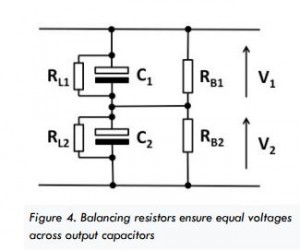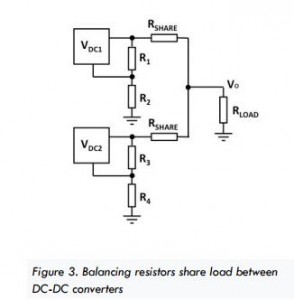
The subject of power supplies is potentially very broad and the application of resistors in power supplies is quite diverse. Here we will focus on power supply units (PSUs) designed for use in electronic appliances that nominally require fixed DC outputs ranging from just a few volts up to a few kV. Whether such end-equipment is destined for consumer, commercial or industrial markets, the PSU designer will need to pay heed to stringent safety, environment and other regulations in addition to meeting the basic electrical performance requirements.  As well as considering the role of resistors in regulating a power supply’s output voltage (or current), we will examine how resistors protect a supply from potential fault conditions, such as output overload, output short- or open-circuit and input surge currents, which can result in a fire or present a shock hazard to users. Power supplies are often defined by their input source, AC or DC, and whether they use linear or switched mode regulation to achieve the desired DC output. AC-DC supplies are typically line powered but a DC in, DC out supply could just be a linear circuit that regulates the output from a battery or other DC source to produce a lower DC level. The term DC-DC converter is usually reserved for supplies that use switched-mode techniques, which can support both step-down (buck) and step-up (boost) conversion for lower and higher voltages respectively. While most power supply manufacturers offer a range of standard units to satisfy various endequipment requirements, some applications demand a custom solution. As a manufacturer and supplier of high performance resistors, Riedon has the experience to help designers choose the right component.
As well as considering the role of resistors in regulating a power supply’s output voltage (or current), we will examine how resistors protect a supply from potential fault conditions, such as output overload, output short- or open-circuit and input surge currents, which can result in a fire or present a shock hazard to users. Power supplies are often defined by their input source, AC or DC, and whether they use linear or switched mode regulation to achieve the desired DC output. AC-DC supplies are typically line powered but a DC in, DC out supply could just be a linear circuit that regulates the output from a battery or other DC source to produce a lower DC level. The term DC-DC converter is usually reserved for supplies that use switched-mode techniques, which can support both step-down (buck) and step-up (boost) conversion for lower and higher voltages respectively. While most power supply manufacturers offer a range of standard units to satisfy various endequipment requirements, some applications demand a custom solution. As a manufacturer and supplier of high performance resistors, Riedon has the experience to help designers choose the right component.
Continue to read here
